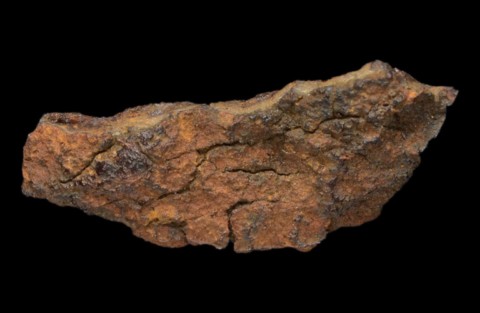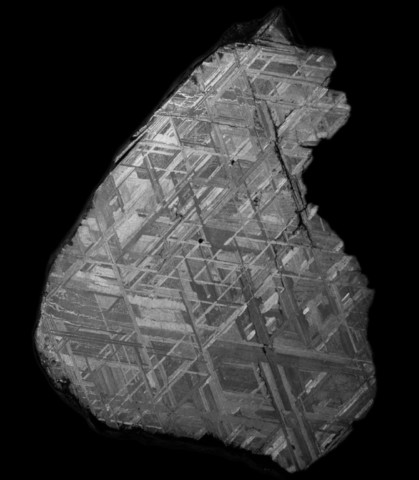 Iron - Encyclopedia
Iron - Encyclopedia
Class : Elements
Subclass : Metals
Crystal system : Cubic
Chemistry : Fe
Rarity : Rare
Very rare in terrestrial rocks, iron is mainly present in metallic meteorites. Terrestrial iron is a rare primary mineral of basalt flows, and a secondary mineral formed by reduction of iron-bearing minerals in contact with organic matter. It frequently contains nickel : rarely more than 3% in "terrestrial" irons, up to 7% in meteoritic irons. It then gradually passes to another mineral : kamacite. Iron crystals are very rare and poorly formed, iron is mainly in the form of grains or flakes, sometimes in plates and masses weighing up to 25 tonnes, covered with an oxidized crust. Native terrestrial iron is very rare on the Earth's surface, however meteoritic iron represented the first source of iron available to Men who made tools and weapons. Currently native iron is only a mineralogical curiosity, too marginal to constitute an iron ore, a role which is fulfilled almost entirely by magnetite and hematite. The iron industry is inseparable from that of steel, the king alloy of our society and which appeared among the Hittites around 1500 BC.
Main photo : Metallic meteorite (Muonionalusta, Sweden) with Widmanstätten figures © R. Tanaka
Iron in the World

Twinning
Twins are known on (111) and lamellar according to {112}.
Fakes and treatments
No fake listed for this mineral species.
Hardness : 4.5
Density : 7.3 to 7.87
Fracture : Irregular
Streak : Gray
TP : Opaque
RI : -
Birefringence : 0
Optical character : None
Pleochroism : None
Fluorescence : None
Solubility : Hydrochloric acid
Magnetism : Ferromagnetic
Radioactivity : None

